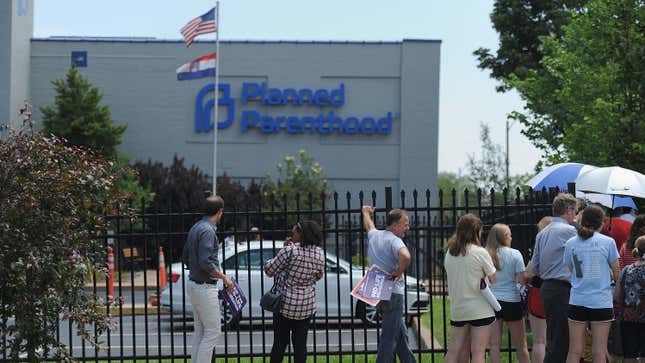The New York Times Wonders If Maybe the Left Is to Blame for Abortion Bans
Latest

Amid near-total abortion bans in a growing number of states and the rise of unscientific laws designed to punish pregnant people who do not carry fetuses to term, a recent New York Times article asks if perhaps abortion rights are eroding because pro-choice leaders grew too unfocused and complacent.
The Times report features interviews with “more than 50″ leaders in the reproductive rights movement, chronicling where the left went wrong in defending abortion rights. The consensus, according to the Times’ compilation of these interviews is that complacency during the Obama administration—during which anti-abortion politicians were able to all but stack state courts with sympathetic judges and redraw districts to favor conservatives—helped create an environment in which criminalized abortion could proliferate. While abortion might have appeared safe on the national level during Obama’s presidency, over the past decade, conservatives were able to quietly set the stage for the attack on reproductive rights at a local level. Much of the blame, according to the writers, falls on Planned Parenthood; the report takes care to highlight the financial disparities between Planned Parenthood and the struggling abortion providers in states where access to abortion has been curtailed by political pressure:
“This past summer, for instance, after Alabama passed its near-total abortion ban, celebrities and liberal donors opened their checkbooks en masse to support Planned Parenthood. The founder of Tumblr gave $1 million. The pop star Ariana Grande held a benefit concert.
At the same time, Gloria Gray, who heads the West Alabama Women’s Center in Tuscaloosa, said she couldn’t afford to give her staff raises or pay for a $20,000 fence to keep the daily protesters off the property. Her crowdfunding effort produced about $4,000.”
According to the Times, responsibility for providing abortions disproportionately falls on these smaller, underfunded clinics in states like Alabama, where Planned Parenthood performed no abortions last year. An interview with acting Planned Parenthood president Alexis McGill Johnson seemed to confirm the overall stance of the piece, which seems to be that national pro-choice groups are too focused on lobbying power at the expense of providing actual abortions:
-

-

-

-

-

-

-

-

-

-

-

-

-

-

-

-

-

-

-

-

-

-

-

-

-

-

-

-

-

-

-

-

-

-

-

-

-

-

-

-








































